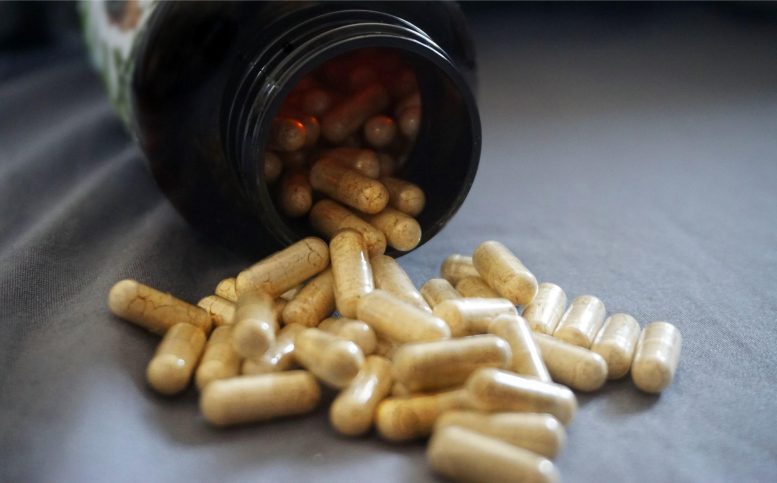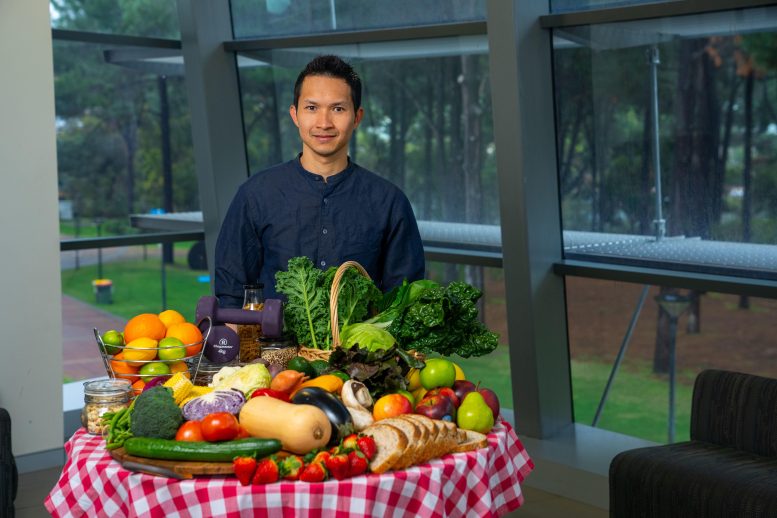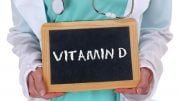
Vitamin K1, also known as phylloquinone, is a type of vitamin K that is found in leafy green vegetables such as broccoli, green beans, kale, and spinach as well as fruits such as prunes, kiwis, and avocados. It is important for the proper functioning of the body’s blood clotting mechanism and for maintaining healthy bones.
A long-term study that analyzed the relationship between hospitalizations related to fractures and diet in nearly 1400 older women has found that vitamin K1 significantly reduces the risk of hospitalization.
Breaking bones can have a significant impact on one’s life, especially in older age when hip fractures can lead to disability, reduced independence, and an increased risk of mortality.
However, research from the Nutrition and Health Innovation Research Institute at Edith Cowan University has found that there may be steps you can take to reduce your risk of fractures later in life.
In collaboration with the University of Western Australia, the study looked at the relationship between fracture-related hospitalizations and vitamin K1 intake in almost 1400 older Australian women over a 14.5-year period from the Perth Longitudinal Study of Aging Women.

Dr. Marc Sim. Credit: Edith Cowan University
It found women who ate more than 100 micrograms of vitamin K1 consumption — equivalent to about 125g of dark leafy vegetables, or one to two serves of vegetables — were 31 percent less likely to have any fracture compared to participants who consumed less than 60 micrograms per day, which is the current vitamin K adequate intake guideline in Australia for women.
There were even more positive results regarding hip fractures, with those who ate the most vitamin K1 cutting their risk of hospitalization almost in half (49 percent).
Study lead Dr. Marc Sim said the results were further evidence of the benefits of vitamin K1, which has also been shown to enhance cardiovascular health.
“Our results are independent of many established factors for fracture rates, including body mass index, calcium intake, Vitamin D status, and prevalent disease,” he said.
“Basic studies of vitamin K1 have identified a critical role in the carboxylation of the vitamin K1-dependant bone proteins such as osteocalcin, which is believed to improve bone toughness.
“A previous ECU trial indicates dietary vitamin K1 intakes of less than 100 micrograms per day may be too low for this carboxylation.
“Vitamin K1 may also promote bone health by inhibiting various bone resorbing agents.”
So, what should we eat — and how much?
Dr. Sim said eating more than 100 micrograms of vitamin K1 daily was ideal — and, happily, it isn’t too difficult to do.
“Consuming this much daily vitamin K1 can easily be achieved by consuming between 75-150g, equivalent to one to two serves, of vegetables such as spinach, kale, broccoli, and cabbage,” he said.
“It’s another reason to follow public health guidelines, which advocate higher vegetable intake including one to two serves of green leafy vegetables — which is in line with our study’s recommendations.”
Reference: “Dietary Vitamin K1 intake is associated with lower long-term fracture-related hospitalization risk: the Perth longitudinal study of ageing women” by Marc Sim, Andre Strydom, Lauren C. Blekkenhorst, Nicola P. Bondonno, Rachel McCormick, Wai H. Lim, Kun Zhu, Elizabeth Byrnes, Jonathan M. Hodgson, Joshua R. Lewisabch and Richard L. Prince, 12 September 2022, Food & Function.
DOI: 10.1039/D2FO02494B









This article is unclear, there is a confusion between grams and micrograms. I believe you mean grams of vegetables and micrograms of K1, but that should be clarified.
New Review Shows This Nutrient Can Altogether Decrease Your Gamble of Bone Cracks
TOPICS:BonesDietEdith Cowan UniversityPublic HealthUniversity Of Western AustraliaVitamins
By EDITH COWAN College DECEMBER 27, 2022
Vitamin K Pills
Nutrient K1, otherwise called phylloquinone, is a sort of vitamin K that is found in verdant green vegetables like broccoli, green beans, kale, and spinach as well as organic products like prunes, kiwis, and avocados. It is significant for the legitimate working of the body’s blood thickening instrument and for keeping up with solid bones.
A drawn out concentrate on that dissected the connection between hospitalizations connected with cracks and diet in almost 1400 more seasoned ladies has found that nutrient K1 fundamentally decreases the gamble of hospitalization.
Breaking bones can altogether affect one’s life, particularly in more seasoned age when hip cracks can prompt handicap, decreased autonomy, and an expanded gamble of mortality.
Notwithstanding, research from the Sustenance and Wellbeing Development Exploration Establishment at Edith Cowan College has found that there might be steps you can take to diminish your endanger of cracks further down the road.
In a joint effort with the College of Western Australia, the review took a gander at the connection between break related hospitalizations and nutrient K1 consumption in very nearly 1400 more established Australian ladies over a 14.5-year time span from the Perth Longitudinal Investigation of Maturing Ladies.
Marc Sim
Dr. Marc Sim. Credit: Edith Cowan College
It found ladies who ate in excess of 100 micrograms of nutrient K1 utilization — identical to around 125g of dull verdant vegetables, or one to two serves of vegetables — were 31% more averse to have any break contrasted with members who consumed under 60 micrograms each day, which is the ongoing vitamin K satisfactory admission rule in Australia for ladies.
There were significantly more certain outcomes in regards to hip cracks, with the people who ate the most nutrient K1 cutting their gamble of hospitalization close to down the middle (49%).
Concentrate on lead Dr. Marc Sim said the outcomes were additional proof of the advantages of nutrient K1, which has likewise been displayed to improve cardiovascular wellbeing.
“Our outcomes are free of many laid out factors for crack rates, including weight file, calcium consumption, Vitamin D status, and predominant infection,” he said.
“Fundamental investigations of nutrient K1 play recognized a basic part in the carboxylation of the nutrient K1-dependant bone proteins, for example, osteocalcin, which is accepted to work on bone sturdiness.
“A past ECU preliminary shows dietary nutrient K1 admissions of under 100 micrograms each day might be excessively low for this carboxylation.
“Nutrient K1 may likewise advance bone wellbeing by restraining different bone resorbing specialists.”
Anyway, what would it be a good idea for us to eat — and how much?
Dr. Sim said eating in excess of 100 micrograms of nutrient K1 day to day was great — and, cheerfully, it is actually somewhat straightforward to do.
“Consuming this much day to day nutrient K1 can undoubtedly be accomplished by consuming between 75-150g, identical to one to two serves, of vegetables like spinach, kale, broccoli, and cabbage,” he said.
“It’s one more motivation to adhere to general wellbeing rules, which advocate higher vegetable admission including one to two serves of green verdant vegetables — which is in accordance with our review’s suggestions.”
Reference: “Dietary Nutrient K1 admission is related with lower long haul break related hospitalization risk: the Perth longitudinal investigation of maturing ladies” by Marc Sim, Andre Strydom, Lauren C. Blekkenhorst, Nicola P. Bondonno, Rachel McCormick, Wai H. Lim, Kun Zhu, Elizabeth Byrnes, Jonathan M. Hodgson, Joshua R. Lewisabch and Richard L. Ruler, 12 September 2022, Food and Capability.
DOI: 10.1039/D2FO02494B
I’m very confused. So many previous reports have been based on research on menaquinone, *K2* – a quite different vitamin from phylloquinone!? and out of a sudden these benefits are being attributed to K!? Not even a mention of this body of work?
For most of human time, without the refrigeration or portability options of today, humans ate from the literal plant; from the kill; from the source of whatever they ate. Red meat was always cooked, but seafood and plant life only rarely; usually only to make it chewable. Modern efforts to create “shelf life” — something that did not exist for most of the human past — causes nutrient fading. The adulteration of food, in any grow or die economic paradigm, has an inevitable path ending. Source: Temple by Monk of YHVH